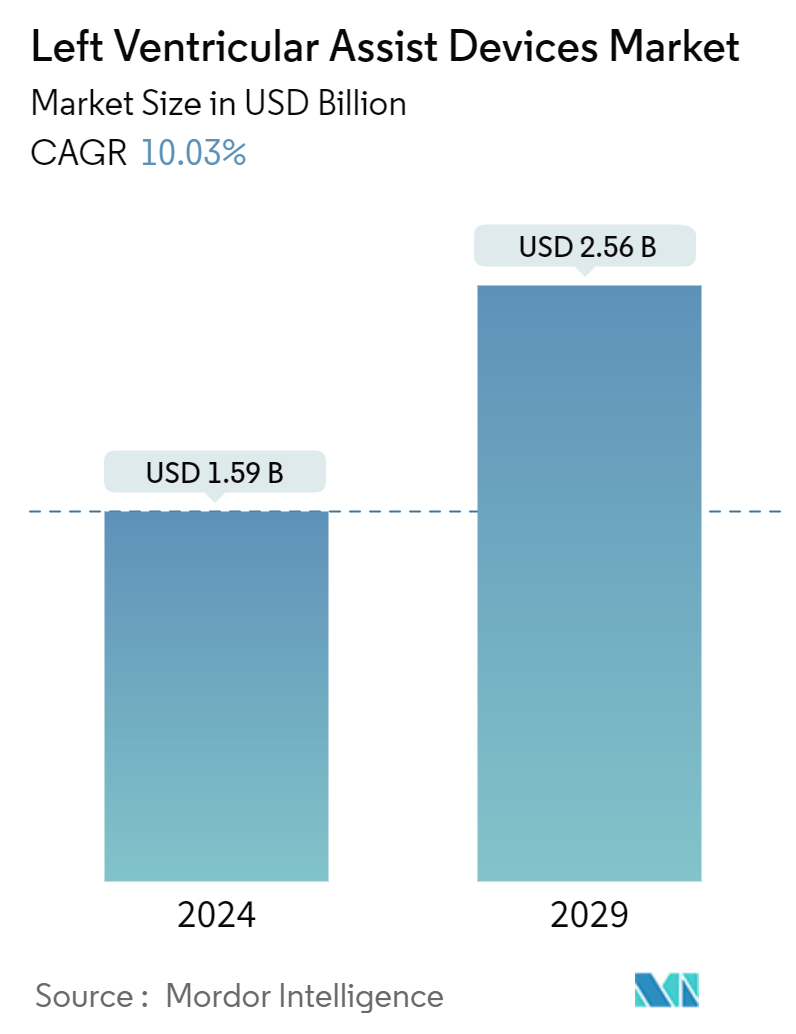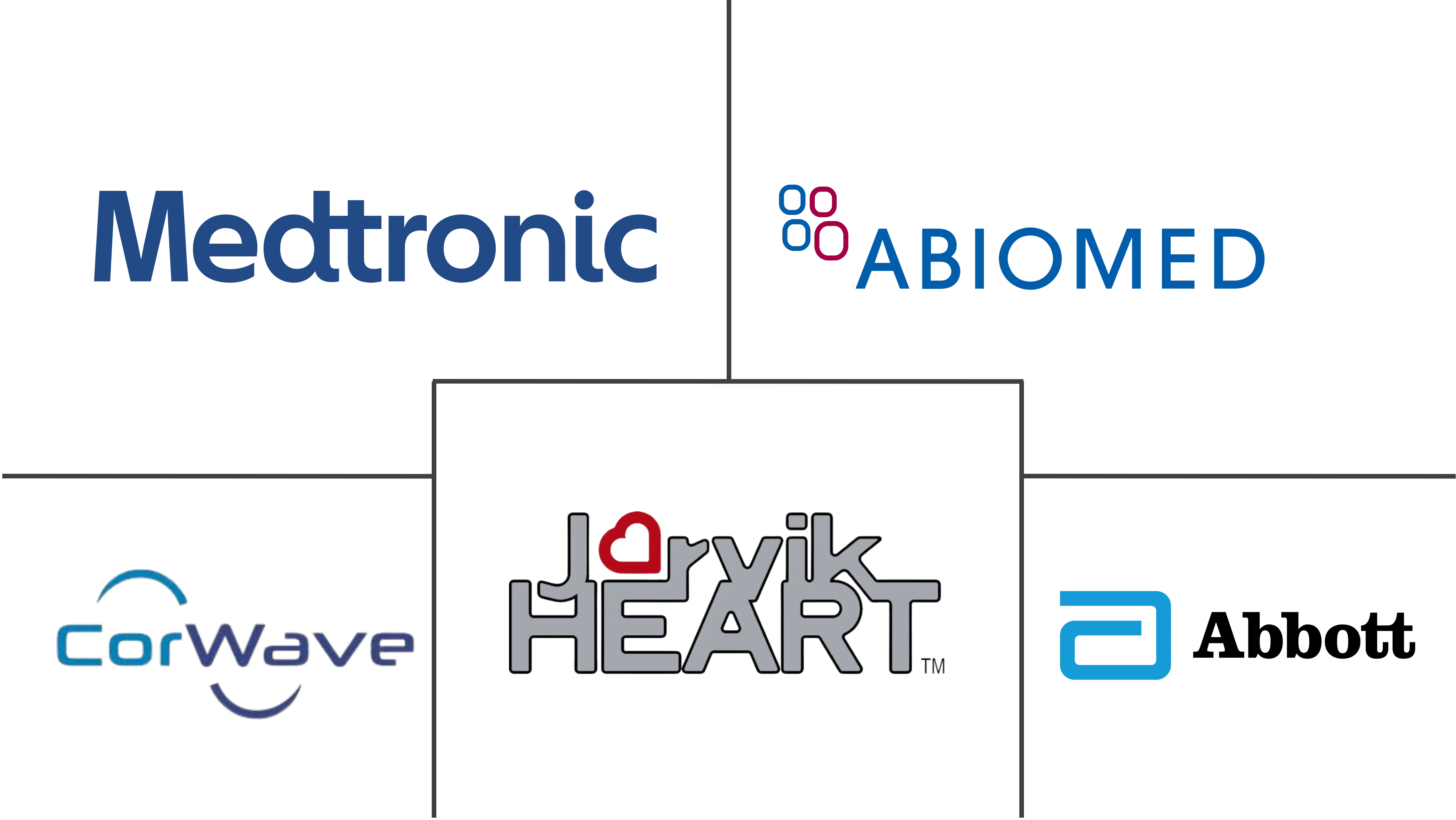Market Size of Left Ventricular Assist Devices Industry

| Study Period | 2019 - 2029 |
| Market Size (2024) | USD 1.59 Billion |
| Market Size (2029) | USD 2.56 Billion |
| CAGR (2024 - 2029) | 10.03 % |
| Fastest Growing Market | Asia Pacific |
| Largest Market | North America |
| Market Concentration | Low |
Major Players
*Disclaimer: Major Players sorted in no particular order |
Left Ventricular Assist Devices Market Analysis
The Left Ventricular Assist Devices Market size is estimated at USD 1.59 billion in 2024, and is expected to reach USD 2.56 billion by 2029, growing at a CAGR of 10.03% during the forecast period (2024-2029).
Factors such as the growing burden of cardiac diseases and heart failure, technological advancement of devices for cardiac disease management, and growing initiatives and awareness regarding cardiovascular diseases are expected to boost the growth of the left ventricular assist devices market.
As global cardiovascular diseases surge, especially among aging populations and those with rising risk factors like hypertension and diabetes, the demand for advanced treatments, including left ventricular assist devices (LVADs), is set to grow. For instance, data from the Journal of Cardiac Failure in October 2023 highlighted that approximately 6.7 million Americans aged 20 and older are currently grappling with heart failure. Projections indicate this figure could escalate to 8.5 million by 2030. Notably, the lifetime incidence of heart failure (HF) has climbed to 24%, suggesting that roughly one in four individuals will confront HF at some point in their lives. LVADs emerge as a crucial alternative for patients with severe heart failure who aren't candidates for heart transplantation. This underscores the rising demand for LVADs, whether as a bridge to transplantation or as a standalone therapy, fueling the market's expansion.
Heart failure stands as a significant global health challenge, ranking among the top causes of mortality. Certain biosensors are adept at detecting these critical changes. It is essential to integrate these biosensors into mechanical circulatory support devices (MCSDs), such as left ventricular assist devices (LVADs), to monitor biochemical and physiological shifts after implantation. Various studies were conducted to assess the integration of biosensors in left ventricular assist devices.
For instance, a June 2024 article in Heart Failure Reviews underscored the potential of innovative passive radio frequency-based sensors paired with LVADs for the early detection of physiological changes. Consequently, the early detection of cardiovascular diseases by using biosensor-integrated LVADs is expected to drive the demand for these devices in the market, propelling the market's growth during the forecast period.
Furthermore, key players are ramping up research and development activities related to LVADs, paving the way for innovative devices in the market. This surge in innovation is expected to propel the market's growth during the forecast period. For instance, in June 2023, Magenta Medical, an Israeli medical device company, introduced an early feasibility study for its Elevate Percutaneous Left Ventricular Assist Device (VAD), targeting high-risk percutaneous coronary intervention (HR-PCI). The Elevate device marks a departure from traditional LVADs, which are large and necessitate open-heart surgery for implantation. Instead, Elevate is introduced via a minor groin puncture and expands once it reaches the heart's left ventricle. This breakthrough signifies a major advancement in cardiac care, potentially offering patients less invasive options for advanced cardiovascular support. Thus, the heightened focus on the Elevate Percutaneous Left Ventricular Assist Device (VAD) underscores its potential to drive the market's growth in the coming years.
Therefore, owing to the rising burden of cardiovascular disease and heart failure, increasing technological advancements in left ventricular assist devices, and growing company activities to conduct various research studies, the studied market is expected to grow during the forecast period. However, the high cost of devices and procedures and the severe risk associated with LVAD implants are likely to impede the market's growth during the forecast period.

